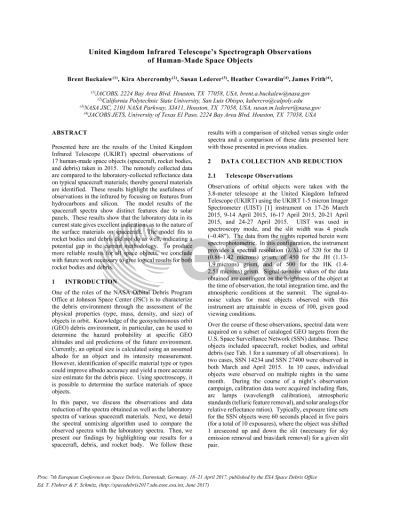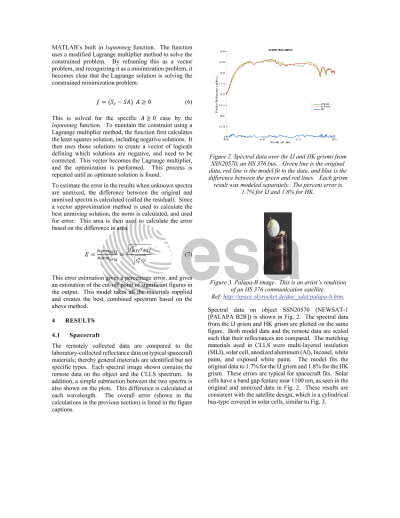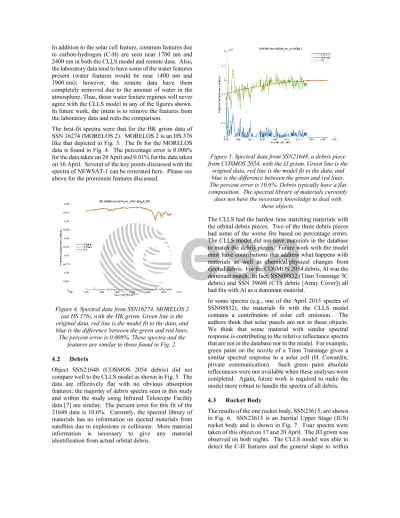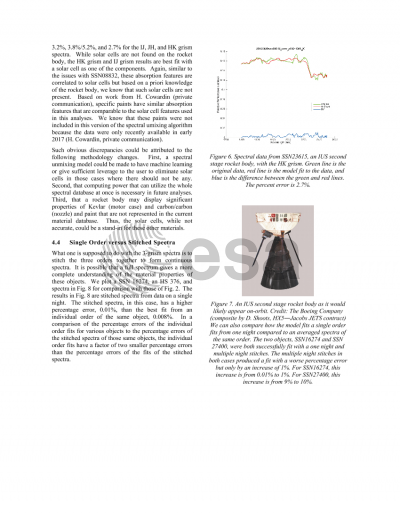Document details

Abstract
Presented here are the results of the United Kingdom Infrared Telescope (UKIRT) spectral observations of human- made space objects taken from 2014 to 2015. The data collected using the UKIRT 1-5 micron Imager Spectrometer (UIST) cover the wavelength range 0.7-2.5 ?m. Overall, data were collected on 18 different orbiting objects at or near geosynchronous orbit (GEO). Two of the objects are controlled spacecraft, twelve are non-controlled spacecraft, one is a rocket body, and three are cataloged as debris. The remotely collected data are compared to the laboratory- collected reflectance data on typical spacecraft materials; thereby general materials are identified but not specific types. These results highlight the usefulness of observations in the infrared by focusing on features from hydrocarbons and silicon. The spacecraft, both the controlled and non-controlled, show distinct features due to the presence of solar panels whereas the rocket bodies do not. Signature variations between rocket bodies, due to the presence of various metals and paints on their surfaces, show a clear distinction from those objects with solar panels, demonstrating that one can distinguish most spacecraft from rocket bodies through infrared spectrum analysis. Finally, the debris pieces tend to show featureless, dark spectra. These results show that the laboratory data in its current state give well- correlated indications as to the nature of the surface materials on the objects. Further telescopic data collection and model updates to include noise, surface roughness, and material degradation are necessary to make better assessments of orbital object material types. A comparison conducted between objects observed previously with the NASA Infrared Telescope Facility (IRTF) shows similar materials and trends from the two telescopes and different times. However, based on the current state of the model, infrared spectroscopic data are adequate to classify objects in GEO as spacecraft, rocket bodies, or debris.
Preview









